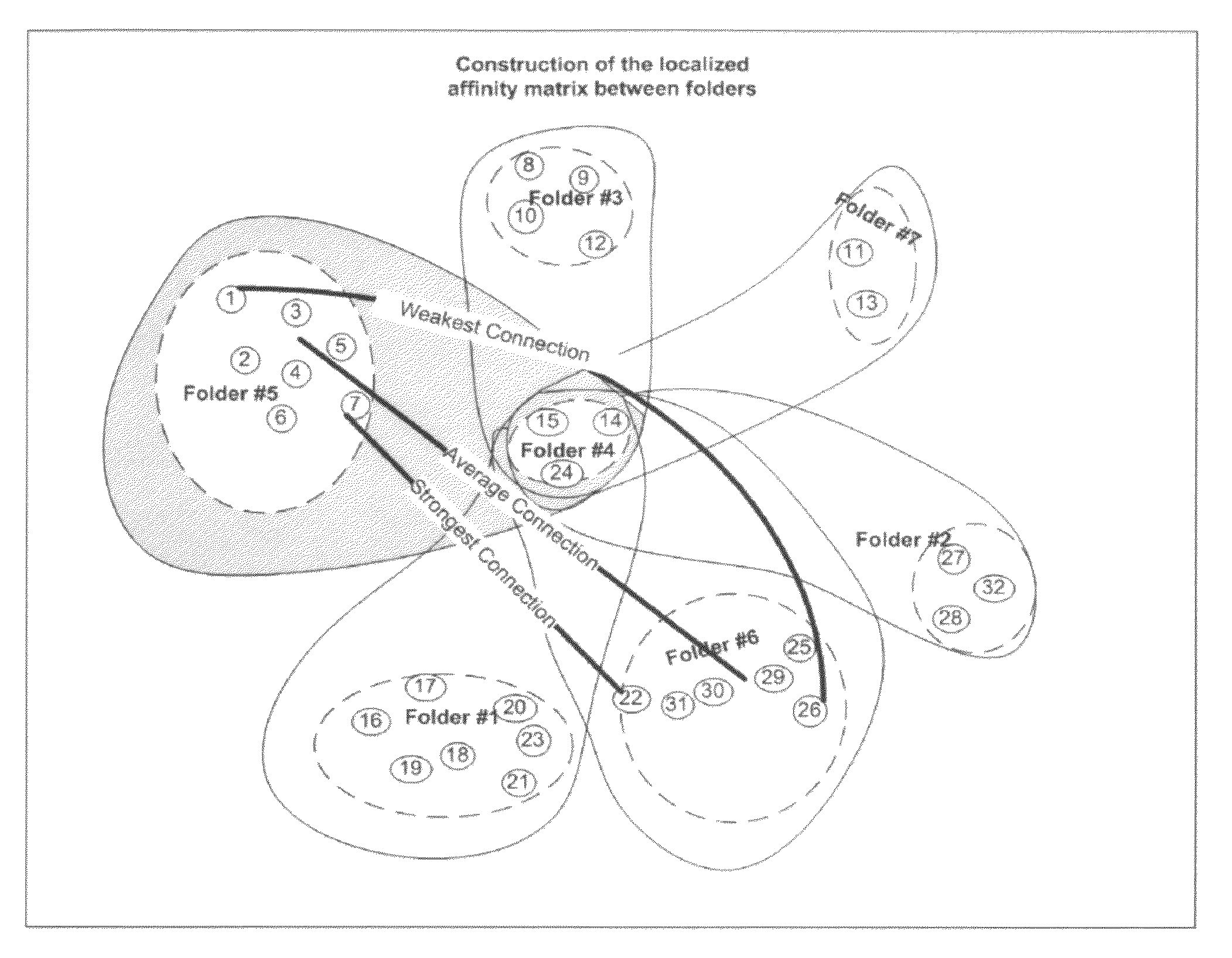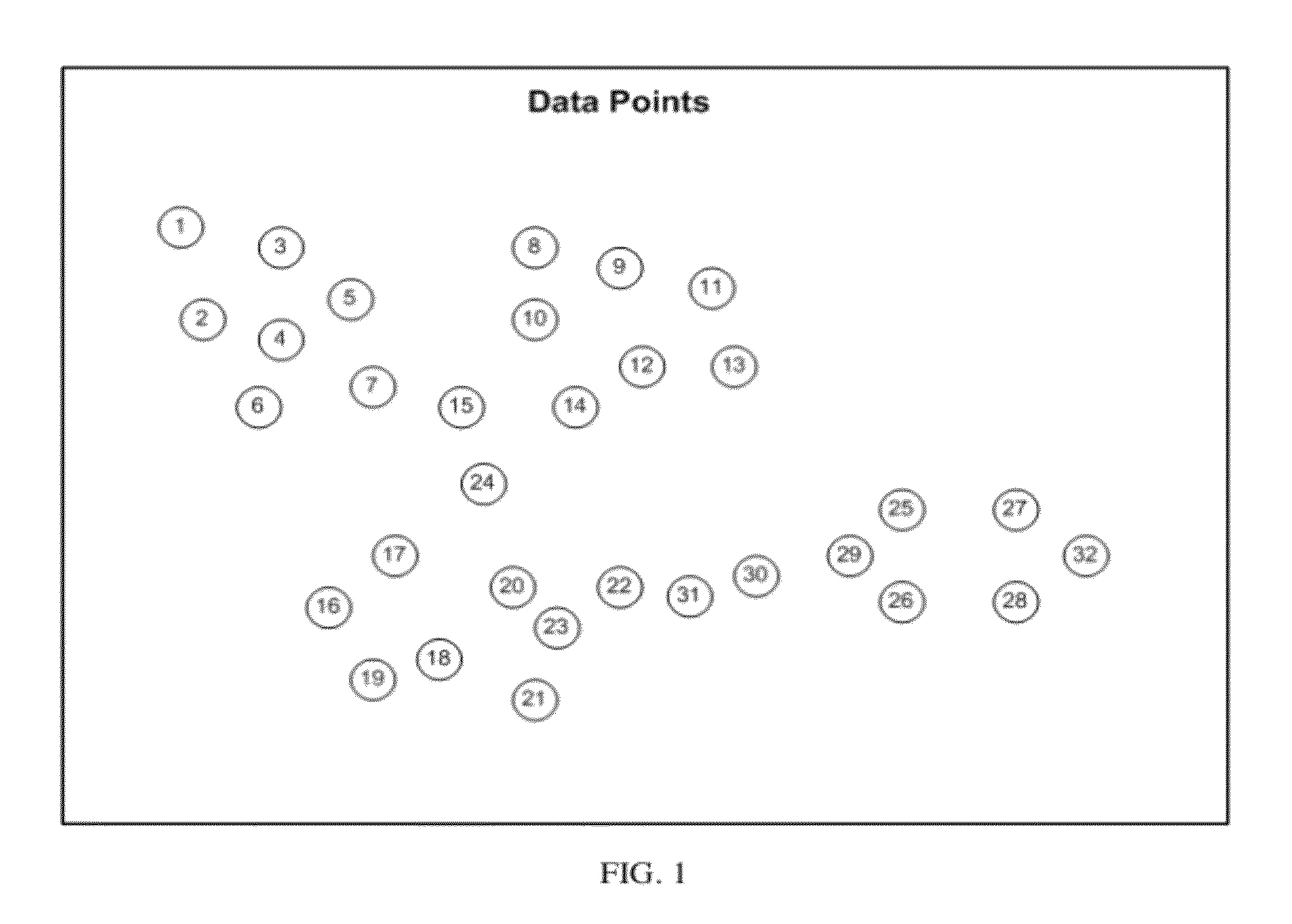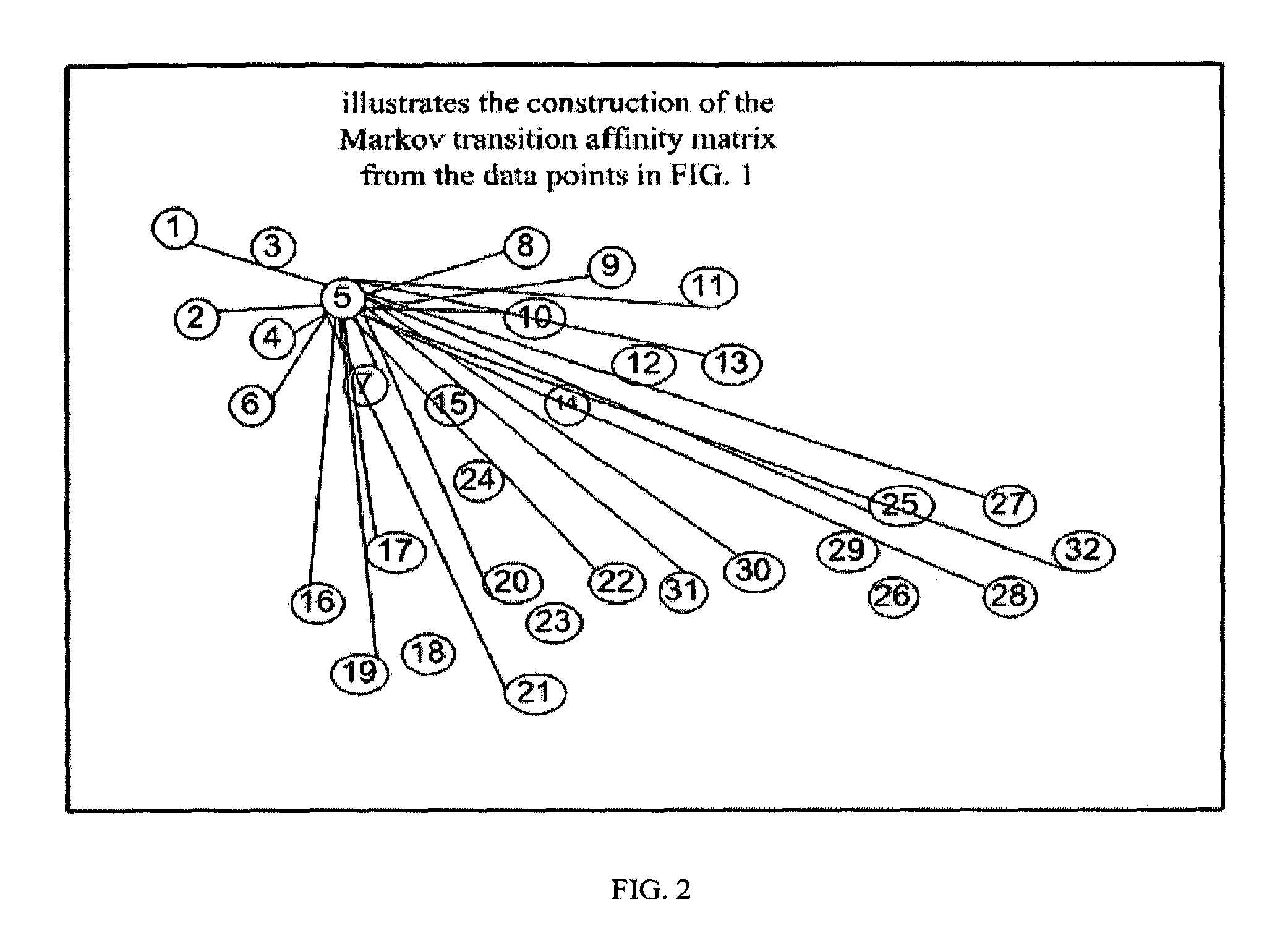Clustering and classification via localized diffusion folders
a folder and localization technology, applied in the field of automatic classification, can solve the problems of increasing the noise in the affinity matrix and the decrease in achieve the effects of improving the accuracy of clustering, reducing the noise in each new folder lam, and improving the accuracy of resulting clusters
- Summary
- Abstract
- Description
- Claims
- Application Information
AI Technical Summary
Benefits of technology
Problems solved by technology
Method used
Image
Examples
Embodiment Construction
[0054]In general, the construction of the LDF hierarchy is based on two consecutive hierarchy levels at a time (also referred to as “two-level processing”). The two-level processing is repeated up to the root of the hierarchy. In some embodiments, the process may end before reaching the root of the hierarchy. In other embodiments, the process ends at the root, with the construction of a single “root super-LDF”. For example, assume that the root is reached in level 5. We first process (at t=1) level 1 (data points) and level 2, where level 1 is a “bottom level” and level 2 is a “top level”. Then, at t=2, we advance to process level 2 (LDFs) and level 3, where level 2 is the bottom level and level 3 is the top level. The two-level processing is repeated with levels 3 and 4 (t=3) and with levels 4 and 5 (t=4). In more detail, for each two-level processing stage:[0055]1. The bottom level is constructed as follows: first, the input can be either data points partitioned into LDFs (true in...
PUM
 Login to View More
Login to View More Abstract
Description
Claims
Application Information
 Login to View More
Login to View More - R&D
- Intellectual Property
- Life Sciences
- Materials
- Tech Scout
- Unparalleled Data Quality
- Higher Quality Content
- 60% Fewer Hallucinations
Browse by: Latest US Patents, China's latest patents, Technical Efficacy Thesaurus, Application Domain, Technology Topic, Popular Technical Reports.
© 2025 PatSnap. All rights reserved.Legal|Privacy policy|Modern Slavery Act Transparency Statement|Sitemap|About US| Contact US: help@patsnap.com



